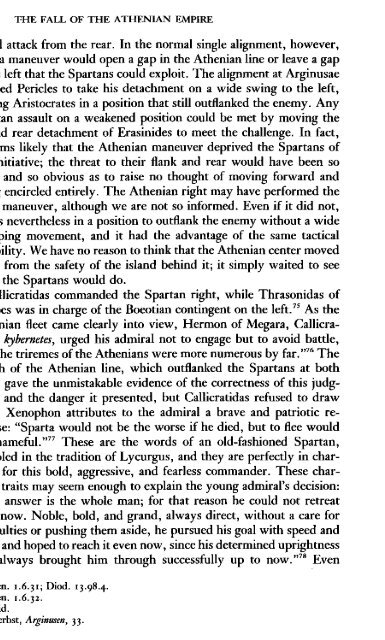The Fall of the Athenian Empire-(A New History of the Peloponnesian War) Donald Kagan - (1987)
MACEDONIA is GREECE and will always be GREECE- (if they are desperate to steal a name, Monkeydonkeys suits them just fine) ΚΑΤΩ Η ΣΥΓΚΥΒΕΡΝΗΣΗ ΤΩΝ ΠΡΟΔΟΤΩΝ!!! Strabo – “Geography” “There remain of Europe, first, Macedonia and the parts of Thrace that are contiguous to it and extend as far as Byzantium; secondly, Greece; and thirdly, the islands that are close by. Macedonia, of course, is a part of Greece, yet now, since I am following the nature and shape of the places geographically, I have decided to classify it apart from the rest of Greece and to join it with that part of Thrace which borders on it and extends as far as the mouth of the Euxine and the Propontis. Then, a little further on, Strabo mentions Cypsela and the Hebrus River, and also describes a sort of parallelogram in which the whole of Macedonia lies.” (Strab. 7.fragments.9) ΚΚΕ, ΚΝΕ, ΟΝΝΕΔ, ΑΓΟΡΑ,ΕΚΚΛΗΣΙΑ,ΝΕΑ,ΦΩΝΗ,ΦΕΚ,ΝΟΜΟΣ,LIFO,MACEDONIA, ALEXANDER, GREECE,IKEA
MACEDONIA is GREECE and will always be GREECE- (if they are desperate to steal a name, Monkeydonkeys suits them just fine)
ΚΑΤΩ Η ΣΥΓΚΥΒΕΡΝΗΣΗ ΤΩΝ ΠΡΟΔΟΤΩΝ!!!
Strabo – “Geography”
“There remain of Europe, first, Macedonia and the parts of Thrace that are contiguous to it and extend as far as Byzantium; secondly, Greece; and thirdly, the islands that are close by. Macedonia, of course, is a part of Greece, yet now, since I am following the nature and shape of the places geographically, I have decided to classify it apart from the rest of Greece and to join it with that part of Thrace which borders on it and extends as far as the mouth of the Euxine and the Propontis. Then, a little further on, Strabo mentions Cypsela and the Hebrus River, and also describes a sort of parallelogram in which the whole of Macedonia lies.”
(Strab. 7.fragments.9)
ΚΚΕ, ΚΝΕ, ΟΝΝΕΔ, ΑΓΟΡΑ,ΕΚΚΛΗΣΙΑ,ΝΕΑ,ΦΩΝΗ,ΦΕΚ,ΝΟΜΟΣ,LIFO,MACEDONIA, ALEXANDER, GREECE,IKEA
You also want an ePaper? Increase the reach of your titles
YUMPU automatically turns print PDFs into web optimized ePapers that Google loves.
352 THE FALL OF THE ATHENIAN EMPIRE<br />
under Eteonicus, for all <strong>the</strong> ships that got away made <strong>the</strong>ir escape to<br />
<strong>the</strong> south, landing at Chios, Phocaea, and Cyme." <strong>The</strong> Spartans lost<br />
seventy-seven ships, some 64 percent <strong>of</strong> <strong>the</strong>ir force, a truly astonishing<br />
number." By comparison, <strong>the</strong> average <strong>of</strong> <strong>the</strong> losses <strong>of</strong> <strong>the</strong> defeated<br />
side at <strong>the</strong> battles <strong>of</strong> Cynossema, Abydos, and Notium was only about<br />
28 percent." In all <strong>of</strong> <strong>the</strong>se battles <strong>the</strong> losing side was able to break<br />
<strong>of</strong>f and escape to safety on land that was not far away. <strong>The</strong> battle <strong>of</strong><br />
Cyzicus, where <strong>the</strong> Spartans lost <strong>the</strong>ir entire fleet, was an amazing<br />
exception to most naval battles; yet it may help us understand what<br />
happened at Arginusae. At Cyzicus <strong>the</strong> A<strong>the</strong>nians used deception,<br />
surprise, and independently commanded units to draw <strong>the</strong> enemy away<br />
from <strong>the</strong> safety <strong>of</strong> land and encircle it. That guaranteed victory at sea.<br />
<strong>The</strong>ir subsequent victory on land allowed <strong>the</strong>m <strong>the</strong> unprecedented<br />
achievement <strong>of</strong> capturing all <strong>of</strong> <strong>the</strong> surviving ships. At Arginusae <strong>the</strong><br />
A<strong>the</strong>nians, once again, employed deception and surprise, as well as<br />
units under independent command, to achieve a great victory. <strong>The</strong><br />
double rows on <strong>the</strong> wings with units free to swing wide to outflank<br />
and encircle <strong>the</strong>ir opponents shocked <strong>the</strong> Spartans and deprived <strong>the</strong>m<br />
<strong>of</strong> whatever battle plan <strong>the</strong>y may have had. <strong>The</strong> right wing <strong>of</strong> <strong>the</strong><br />
A<strong>the</strong>nians was able to close <strong>of</strong>f <strong>the</strong> two-mile channel between Arginusae<br />
and Lesbos and <strong>the</strong>reby prevent easy escape to <strong>the</strong> north. <strong>The</strong><br />
left wing, however, was unable to complete <strong>the</strong> double envelopment,<br />
allowing forty-three Spartan ships to escape.<br />
<strong>The</strong> A<strong>the</strong>nians lost twenty-five ships." But <strong>the</strong>y had won a magnificent<br />
victory in <strong>the</strong> largest battle ever fought between Greek navies. 89<br />
<strong>The</strong> chief goal <strong>of</strong> <strong>the</strong>ir campaign, <strong>the</strong> liberation <strong>of</strong> Conon and his fleet,<br />
was quickly accomplished, for Eteonicus got word <strong>of</strong> <strong>the</strong> outcome <strong>of</strong><br />
<strong>the</strong> battle and quickly sailed to Chios, leaving Conon free to rejoin <strong>the</strong><br />
85<br />
Xen. I.6.33. Diodocus (•3·99·5) reports that <strong>the</strong> right wing <strong>of</strong> <strong>the</strong> Spartan line<br />
gave way first, but Xenophon's version is more likely. If <strong>the</strong> ships around Callicratidas<br />
had fled early, <strong>the</strong>y would have found it relatively easy to escape, since <strong>the</strong>y were<br />
located at <strong>the</strong> sou<strong>the</strong>rn end <strong>of</strong> <strong>the</strong> battle. <strong>The</strong> Laconian contingent, in that case, would<br />
not have lost nine out <strong>of</strong> ten <strong>of</strong> its ships.<br />
86 Diodorus (IJ.I00.4) provides <strong>the</strong> precise number <strong>of</strong> losses on <strong>the</strong> Spartan side.<br />
Xenophon (1.6. 34) says that <strong>the</strong> Spartans lost nine <strong>of</strong> ten Laconian ships and <strong>the</strong> allies<br />
lost more than sixty. <strong>The</strong> figures are compatible.<br />
117<br />
At Cynossema <strong>the</strong> Spartans lost twenty-one <strong>of</strong> eighty-six, or 24 percent; at Abydos,<br />
thirty <strong>of</strong> ninety-seven, or 31 percent; at Notium, <strong>the</strong> A<strong>the</strong>nians lost twenty-two <strong>of</strong><br />
eighty, or 28 percent.<br />
88 Xen. 1.6.34; Diod. IJ.IOO.J.<br />
89<br />
Diod. IJ-98·5·

















